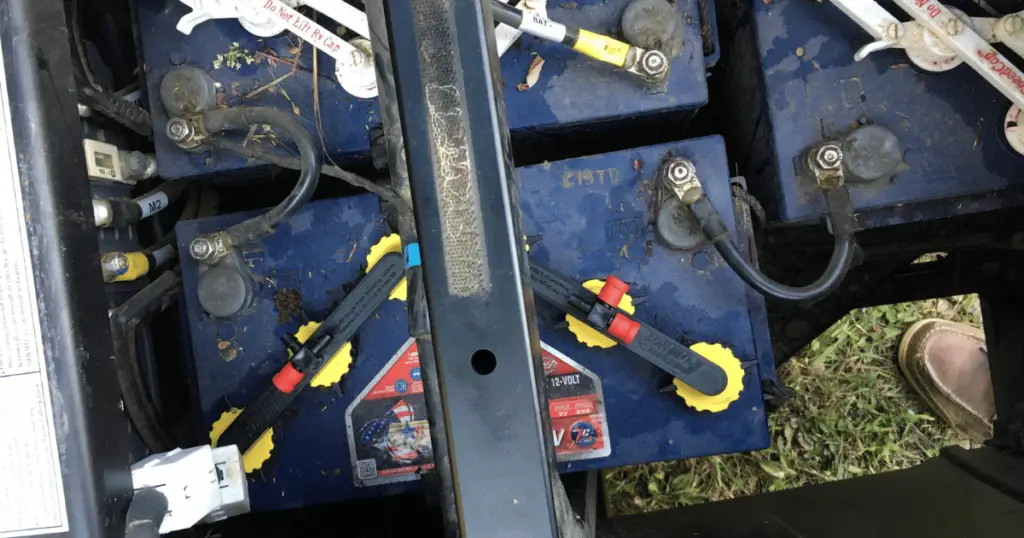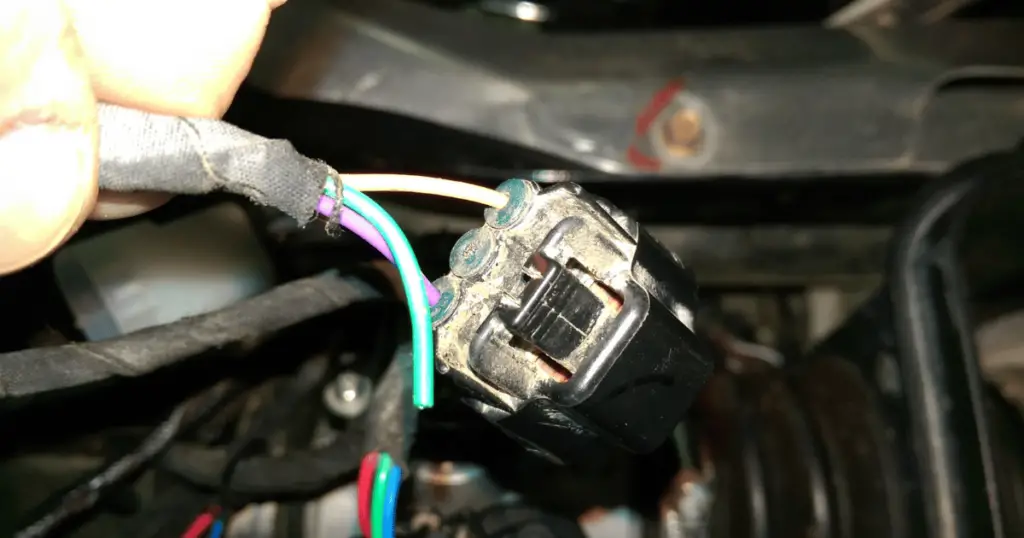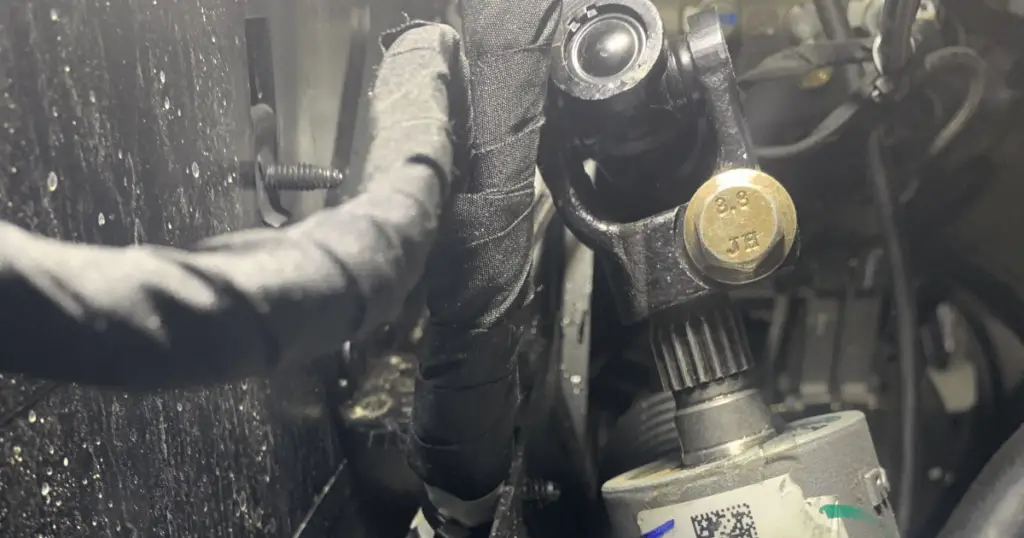Staring down the barrel of a new off-road adventure, you couldn’t be more excited to jump into your Polaris Ranger EV. But even the most trusted steeds have their days, and you should be aware that even this rugged side-by-side isn’t without its quirks. From battery issues to quirky electronics, let’s explore some of the common Polaris Ranger EV problems, and what you can do to keep your ride smooth and your adventures uninterrupted.
And on a higher level, you should know about the Polaris Ranger years to avoid in general.
Battery Issues

When it comes to your Polaris Ranger EV, few things are as central to its performance and enjoyment as the battery pack. Understanding the issues that can arise with your EV battery helps you stay ahead of potential frustrations.
Short Battery Life
Ever feel like you’re constantly checking your watch? Well, if you’re finding that your Ranger EV just doesn’t seem to hold a charge like it used to, you’re dealing with short battery life. This could be due to age, the number of charge cycles, or even exposure to extreme temperatures. To maximize battery life, try to maintain a moderate climate for your vehicle and avoid complete discharges when possible.
Charging Problems
You’ve probably experienced that moment of annoyance when you plug in your phone, and nothing happens. If your Ranger EV isn’t charging properly, it could be down to a faulty charging cable, a problem with the charging station, or an issue within the vehicle itself. Double-check your connections and consider getting your charger inspected.
Battery Management System Faults
The Battery Management System (BMS) is like the brain for your battery, maintaining its health and efficiency. If you’re experiencing battery issues, it could be that your BMS needs some attention. Faults here can lead to incorrect charging and discharging, potentially shortening your battery’s lifespan.
Deep Discharge and Permanent Damage
We’ve all left our gadgets on until they’re dead, but if you let your Polaris drain completely, you might be inviting permanent battery damage. EV batteries dislike being left in a state of deep discharge. It’s a good idea to keep a moderate charge, especially if storing your vehicle.
Battery Replacement Costs and Options
Eventually, batteries need replacing. That’s just life. And you’ve guessed it; this can be pricey. However, prices are coming down as technology improves. When it’s time for a replacement, weigh your options carefully – there may be refurbished or third-party batteries that can save you some green while still keeping the planet green.
Motor and Drivetrain Complications
Beyond battery issues, the motor and drivetrain are critical to your Ranger EV’s muscle. Understanding what can go wrong helps you listen to your vehicle and respond to its needs.
Motor Failure or Performance Drop
Sometimes, you just don’t get the oomph you’re expecting. Motor failure or a drop in performance can be caused by overuse, overheating, or electrical problems. If your EV isn’t accelerating like it should, it’s probably time for a professional check-up.
Drivetrain Noises and Vibrations
You know that awkward rattle in the car that you can never quite place? Strange noises and vibrations coming from your drivetrain should not be ignored. They can signify wear and tear, or worse, impending failure. Get it checked out before it becomes a more complex problem.
Axle and Differential Problems
The axle and differential are like the unsung heroes of your EV, quietly keeping your wheels turning smoothly. If you encounter issues like leaks or strange noises when turning, you might have a problem. Regular maintenance keeps these components happy (and you out of the repair shop).
Transmission Issues Including Gear Shifting
Although your EV doesn’t have a traditional gearbox, it does have a transmission system that can experience problems, such as difficulty shifting gears if equipped with a transmission. Make sure your vehicle’s software is up to date and seek professional help if the issue persists.

Electrical Challenges
Your Ranger EV is loaded with electrical systems, all aiming to give you a seamless experience. However, wires can fray, and connections can corrode, leading to a whole host of electrical gremlins.
Malfunctioning Dash Panel and Gauges
Imagine driving without knowing how fast you’re going or how much charge you have left. When the dash panel and gauges start to act up, it’s not just inconvenient – it can be downright dangerous. Keep an eye on them and address any irregularities swiftly.
Headlight and Taillight Failures
You might not fear the dark, but you certainly want to see and be seen when you’re out there. Headlight and taillight failures are not uncommon and can usually be linked back to a burnt-out bulb or a fuse issue. No need to ride blind; replacements are usually an easy fix.
Wiring Harness Corrosion and Breakage
Even the toughest vehicles aren’t immune to the elements. Corrosion and breakage within the wiring harness can lead to intermittent or permanent electrical failures. Regular inspections can help catch these before they leave you stranded.
Fuses Blowing and Circuit Breaker Tripping
Just like in your home, fuses and circuit breakers in your EV exist to protect the electrical system. If you find them blowing or tripping frequently, it’s a sign that there’s an underlying issue that needs addressing. Ignoring these signs can lead to more significant electrical failures down the line.
With all this in mind, how long do you think a Polaris Ranger will last?
Software and Control System Glitches
Like your smartphone, your Ranger EV relies on software and control systems to operate correctly. But, as with any technology, glitches can happen.
Firmware Bugs and Update Necessities
No one likes bugs, whether they’re crawling or in your software. If you’re experiencing weird glitches, you might need a firmware update. These updates can usually be handled by your dealer but don’t procrastinate; outdated software can lead to bigger problems.
Controller Failures
The controller is your EV’s conductor, keeping the electrical symphony in tune. When it fails, components like the motor and battery might not communicate properly, leading to performance issues. Swift action is necessary to prevent further complications.
Inconsistent Performance from Electronic Controls
If pushing a button sometimes feels more like a gamble, you’re dealing with inconsistent electronic controls. This can make your vehicle feel unpredictable and unreliable. A trained technician can help diagnose and fix these issues.
Display Screen Malfunctions
The display screen is your window to the health and status of your EV. If it malfunctions, it can be both annoying and problematic, preventing you from accessing important vehicle information. Most screen issues are fixable, so don’t delay in addressing them.
Charging System Failures
Your charging system is the lifeline for your battery, and any failure here can leave you high and dry without power.
On-Board Charger Malfunctions
Your EV’s onboard charger is the gatekeeper, regulating the flow of electricity into your battery. Malfunctions here can mean charging is slow or non-existent. This is generally a job for the professionals to diagnose and repair.
Incompatibility with Charging Stations
Ever tried to plug a USB into a port, only to realize it’s the wrong type? Incompatibility with charging stations can feel a lot like that. Always ensure the station you’re using matches the specifications for your Ranger EV. Sometimes an adapter can save the day, but other times, you’ll need to find an appropriate charging station.
Charging Port Damage or Faults
Remember to handle your charging port with care, as damage here can lead to failures when trying to charge your EV. Look out for signs of wear or damage and address them immediately to avoid being left without power.
Slow Charging Rates
If charging your EV feels like watching paint dry, you could be battling slow charging rates. Factors like temperature, the age of the battery, or issues with the charging system can influence charging speed. Sometimes it’s as simple as moving your vehicle to a cooler location or as complex as having your battery checked by a tech.

Suspension and Steering Concerns
A smooth ride relies on the harmony of your suspension and steering systems. When things go awry here, your comfort and vehicle handling can suffer significantly.
Shocks and Struts Wear and Tear
Bounce, bounce, bounce – fun on a trampoline, less so in your Ranger EV. Worn shocks and struts can turn off-roading into a rough ordeal. Keep an ear out for the tell-tale signs of wear, such as knocking noises or a bumpy ride, and replace these parts as needed.
Steering Alignment Issues
Feeling like you’re constantly fighting the steering wheel is a workout you didn’t sign up for. Steering alignment issues not only cause uneven tire wear but can make handling your EV a chore. Regular alignments can help keep your ride on the straight and narrow.
Ball Joint and Bushing Deterioration
Your EV’s suspension system relies on ball joints and bushings to provide smooth movement. When these components wear out, you’ll notice it in the form of clunks or squeaks when going over bumps or making turns. Addressing this issue quickly can prevent further damage.
Uneven Tire Wear and Handling Difficulties
Your tires are your connection to the road, so uneven wear is more than just an aesthetic issue – it’s a safety one. It can be a symptom of suspension problems, improper inflation, or misalignment. Keeping your tires in check helps ensure your EV’s handling remains predictable and safe.
Read More Ranger:
- Polaris General vs Polaris Ranger: Which Side-by-Side Wins?
- Polaris Ranger vs Kawasaki Mule: A Side-by-Side Comparison
- Honda Pioneer 1000 vs Polaris Ranger 1000: Total Shootout
- Honda Pioneer 520 vs Polaris Ranger 500: A Real Shootout
- Honda Pioneer vs Polaris Ranger: Who Packs The Punch?
- Can-Am Defender vs Polaris Ranger: Who Rules Supreme?
- Polaris Ranger 800 Check Engine Light Codes: Tips and More
- CFMoto UForce 1000 vs Polaris Ranger: A Deep Comparison
Braking System Problems
Being able to stop reliably is non-negotiable in any vehicle, and EVs have their specific set of brake system concerns.
Brake Pad and Rotor Wear
Even though your Ranger EV uses regenerative braking, traditional brake pads and rotors still play a critical role. Wear on these components is inevitable over time, leading to decreased performance. Regular checks are key to maintaining effective braking.
Hydraulic System Leaks and Failures
An EV’s hydraulic brake system can experience leaks and failures, just like any other vehicle. If your brakes feel spongy or less responsive, a leak might be at fault. Keep an eye on your brake fluid levels and look out for any pooling liquids under your EV.
Brake Power Regeneration Faults
One of the cool features of an EV is its ability to recharge the battery while braking. But when this system faults, you lose out on efficiency and potentially some braking performance. If you suspect a problem, it’s best to get it checked out immediately.
Noise and Reduced Braking Performance
Grinding, squeaking, or a drop in braking performance isn’t just frustrating, it’s concerning. These can be signs that your brakes need immediate attention. Proper upkeep doesn’t just keep the noise down, it keeps you safe.
Body and Frame Issues
With all the electrical wizardry aside, your Polaris Ranger EV is still a physical machine, and its body and frame can take a beating, leading to their own set of issues.
Cracking or Warping of Plastic Panels
You expected your Ranger EV to endure the elements, not morph because of them. Cracking or warping of plastic panels not only hurts the appearance but can be a sign of stress points that need reinforcement or replacement.
Corrosion of Metal Parts and Fasteners
Rust never sleeps, and neither should you when it comes to keeping an eye on metal parts and fasteners for corrosion. Rust can undermine the structural integrity of your EV, so nip it in the bud with proper maintenance and rust prevention practices.
Windshield and Door Latch Problems
It’s no good if you can’t see out of your EV or if doors don’t secure properly. Windshield issues render your EV unsafe, and door latch problems could leave you quite literally in the cold. Timely repairs are important for both comfort and security.
Sealant and Weather Stripping Failures
The last thing you want is moisture where it shouldn’t be. Sealant and weather stripping failures can lead to leaks and wind noise. Keeping seals intact keeps the elements out and the cabin cozy.
Cooling System Inefficiencies
Just because your vehicle runs on electricity doesn’t mean it doesn’t get hot under the collar. The cooling system is pivotal in maintaining optimal performance and preventing overheating.
Overheating During High-Load Operations
Pushing your Ranger EV hard on a summer day? Overheating can occur during high-load operations, potentially damaging components. Keep an eye on temperature gauges, especially when working your EV hard.
Coolant Leaks and Radiator Malfunctions
A puddle under your vehicle and a rising temperature gauge are the last things you want to see. Coolant leaks and radiator malfunctions can lead to overheating and must be addressed promptly.
Thermostat Failures
The thermostat is the traffic cop for coolant flow. If it fails, it can cause your EV to overheat or run too cool. Maintaining the right operating temperature helps your vehicle run efficiently, so don’t ignore thermostat issues.
Inadequate Air Flow and Venting
Proper airflow over radiators and through the vehicle’s venting system is crucial. If you notice your EV getting hotter than usual, check that intake and exhaust paths are clear of debris and obstructions.
Future Outlook and Evolutions
Despite these problems, the future for your Polaris Ranger EV is bright and full of potential. Keep an ear to the ground for what’s coming next.
Expected Upgrades in Newer Models
Just as your smartphone gets better with each new release, so does your EV. Expect upgraded batteries, more efficient motors, and improved software in newer models. Keeping your vehicle updated can sometimes even retroactively improve your current model.
Industry Trend Impact on Polaris Ranger EV
The EV industry is booming, and as it grows, the technology improves. This positive trend can only benefit your Ranger EV in the long run, as advancements become standard and trickle down into even the most rugged of off-road vehicles.
Technological Advancements and Innovations
Technology is constantly evolving, and your Ranger EV will likely see the benefits in things like improved battery technology, enhanced regenerative braking, and smarter vehicle controls. These advancements aim to tackle current problems and improve your overall driving experience.
Potential Solutions to Current Problems
As EV technology matures, solutions to the issues you face today will become more readily available. This might mean better aftermarket parts, more specialized mechanics, and more cost-effective repairs and upgrades.
Remember, your Polaris Ranger EV is a complex and powerful machine. Familiarizing yourself with its quirks and features means you can enjoy it to its fullest potential. Whether you’re troubleshooting battery issues, taming electrical gremlins, or simply keeping up with routine maintenance, staying informed and proactive is the key to a happy and healthy EV experience.


Leave a Reply